|
|

This chapter describes the CiscoWorks Blue Maps data-link switching (DLSw) application. It contains the following main sections:
If you prefer to view the DLSw information from a web browser, see the chapter "Using the Web Browser."
For information on DLSw daemons, see the appendix "CiscoWorks Blue Maps Daemons and Processes."
DLSw Maps provides the following main views of your network devices:
From these DLSw map views, you can obtain additional DLSw-related information by selecting the popup menu associated with a device on the map. Data-link switching plus (DLSw+) network entities, such as border nodes, backup nodes, and group numbers, are shown as regular DLSw nodes on the map.
You can configure the sync and discovery daemons to dynamically discover network devices. The DLSw Maps application does not, by default, provide dynamic discovery of new DLSw devices.
This section describes how to start the DLSw application. You can start the DLSw application from the workstation system prompt or from a network management system, such as NetView for AIX.
Before you start the DLSw application, you should have a seed file that identifies at least one or two selected routers as key devices. If you do not identify key routers in the seed file, the DLSw application cannot display its key devices view and prompts you to designate key devices or to select another view of the network. For information about how to designate key devices, see the section "Defining Key Devices" later in this chapter. For information about how to use key devices, see the section "Using Key Devices" later in this chapter.
The term network management system refers to NetView for AIX, HP OpenView, or Sun Net Manager on the network management workstation.
You can provide network information to DLSw in two ways. You can use the database maintained by a network management system. Or you can list all the network devices in a seed file. If you do not have a network management system, or if the network management system is not up-to-date and cannot be updated, or if you know the network management system database is so large that you do not want a map application to spend the time querying every device listed there, you can create a seed file. A seed file is a text file that lists the routers, and their read community strings, that you want to be recognized by a specific Maps application. Supply this seed file to the Maps application using the procedure in the section "Using a Seed File."
If you are using a network management system database, verify that the network management system has current data to share with Maps applications before you start DLSw. Even if the network management system is not running at this time, verify that it has been run recently in automanage mode or that you have run the discovery process at least once since the last installation of new routers or reconfiguration of existing routers. If you want to discover new routers dynamically as they come online, the network management system must be running in automanage mode continually.
The collection of information and graphical representation of DLSw devices and peer states in the network is usually automatic. You can see a representation of a complete DLSw network or a narrowed perspective of the DLSw network, including Token Rings, routers, peer statistics, circuit lists, and links.
The installation process establishes a sample default user account named cwblue. The user cwblue does not have a starting password. You can either assign a password to cwblue or log in as root and change to cwblue. Then start the DLSw application.
There are two ways to start the DLSw application. You can use the rundlsw run script, or you can use the dlsw command. This section describes how to use the rundlsw run script. To use the dlsw command, see the appendix "CiscoWorks Blue Maps Daemons and Processes." The DLSw application is accessible from $CWBROOT/dlsw/bin.
You can log in to a remote UNIX host from your own local UNIX workstation, export the remote host display to your local workstation, and then run the application from the remote host. To start the remote host's DLSw application from your local workstation, use the following procedure:
Step 1 At your local UNIX workstation, enter the following command:
xhost +
Step 2 Log in to the remote UNIX host as cwblue (or with a username of your own choosing).
Step 3 Set your DISPLAY environment variable to export the display from the remote host to your local workstation. Depending on which shell you are using, use one of these commands.
From the K shell (ksh):
export DISPLAY=IP_address:0.0
From the C shell (csh) or TC shell (tcsh):
setenv DISPLAY IP_address:0.0
Step 4 To start DLSw, enter the following commands:
cd $CWBROOT/dlsw/bin
source rundlsw
When you start DLSw, the rundlsw command script automatically starts the monitor and poller daemons. The monitor and poller daemons monitor the changes in the network, update the Maps database with the changes, and notify the DLSw application when network changes occur. When you exit the DLSw application, all daemons continue to run to maintain the Maps database. If you want to stop them, select Admin>Process Control from the menu bar and stop the daemons.
This section describes what happens when you start DLSw for the first time (or when you select View>Key Devices from the menu bar).
When it first starts, DLSw tries to display a special view called the key devices view. The key devices view displays those routers that you have designated as "key devices." Because this is your first time with DLSw, you probably have not yet designated routers as key devices. So when DLSw starts, the key devices view is empty; there are no key devices to display.
When the key devices view is empty, DLSw determines whether there are any routers, enabled for DLSw, in the Sybase database. Depending on whether there are DLSw--------enabled routers in the database, DLSw proceeds as described in the following sections:
If the key devices view is empty and there are no DLSw routers in the Maps database, then discovery was not done. DLSw displays a popup dialog that says this:
Key devices discovery needs to be performed.
Please create a seed file with "key" tags in it.
After that, select Admin->Discover->Seed File.. on that seed file.
OK?
Select Admin>Discover>Database or Admin>Discover>Seedfile to discover the network. Now retry the key devices view. If the key devices view is still empty, go to the section "DLSw Routers Are in the Database."
If the key devices view is empty, but there are DLSw routers in the Maps database, then discovery was done but no key routers are designated. DLSw displays the message window shown in Figure 5-1.

You can do one of the following things:
There are several ways that the DLSw application can discover the routers in a network. You can provide a list of enabled routers in a special file called a seed file. Or you can let the Maps application get its information from a network management system database. Both methods of discovery are described in this section, which contains the following subsections:
Each record in the seed file can be either a comment or a router specification. You can list the routers in any order within the seed file.
A comment is a single line of text that begins with the # character, as shown below.
# This line is a comment.
A router specification can have one of the following formats:
router [ReadCommunityString] [key]
or
router:[ReadCommunityString]:[key]
Use the following conventions for the router specification:
The following sample router specification designates router west.cisco.com as a key device with the read community string "public."
west.cisco.com:public:key
Because the "key" parameter is used for DLSw only and is ignored for APPN and RSRB, you can use the same seed file for all three Maps applications. The following lines are from a sample seed file:
# Seed file for CiscoWorks Blue Maps applications
# Next is a non-key router with goldilocks read community string
east.cisco.com goldilocks
# Next is a non-key router with default read community string
172.18.7.47
# Next is a key router with default read community string
west.cisco.com:*:key
# Next is a key router with a read community string
east.cisco.com:readstring:key
To use a seed file to provide the information to the application, use the following procedure:
Step 1 If you are creating a seed file for the first time, create the $HOME/.dlsw directory using the following commands:
cd $HOME
mkdir .dlsw
Step 2 Use a text editor to create the seed file. Save the seed file, for example with the name $HOME/.dlsw/dlswseed.
Step 3 Start DLSw and select Admin>Discover>Seed File to display the Seed File Discover window.
Step 4 Enter the name of the seed file, verify the correct read community string, and click Discover. Discovery takes place while you wait.
After loading the database using the seed file, the DLSw application operates accurately until a router is taken off line or a new router is configured. At that time, you can do one of the following actions:
The network management system maintains a database that includes all SNMP-managed routers in your network. You can use that database to provide the Maps application with the information that it needs to discover the DLSw-enabled routers in the network. You can do this manually or automatically.
To have the Maps application discover the network from the network management system database manually, select Admin>Discover>Database from the Maps application menu bar. The Maps application adds the routers found by the network management system to the maps database. The Maps application checks the database for new routers, polls their MIBs, and updates the Maps database with the new MIB information.
Step 1 Select Admin>Process Control from the menu bar.
Step 2 Click the Sync and Discover buttons.
Step 3 Click Start.
The sync daemon searches the network management database and puts routers found by the network management system in the Maps database. The discover daemon sends an SNMP query to all devices not yet discovered to find any undiscovered routers that are DLSw--enabled.
If you want to add only one or a few routers to your network, you can discover each router individually using the following procedure:
Step 1 Select Edit>Add Device(s).
Step 2 When prompted, enter the router's device name and its read community string.
Step 3 Click OK.
The DLSw application adds the router to the Maps database, polls the router's MIB, and adds the MIB information to the Maps database. Watch the status area to see a message that indicates the success or failure of this polling.
It is sometimes useful to rediscover a DLSw router, especially if one of the following events occurs:
There are two ways to rediscover individual routers:
The following conditions must be met to have SNA PUs and LUs correlated with the DLSw routers that support them:
This section describes how you can specify selected DLSw routers as key devices to limit some of the SNMP traffic on your network.
A key device is a router that you designate as "key." This usually means that the router is in close proximity to the mainframe, or it supports an important set of network resources. You can use key routers to reduce the SNMP traffic needed to manage your network, to minimize the number of devices shown on a DLSw map, and for circuit polling, which is needed for SNA correlation. You can also specify a faster polling rate for key devices.
You can limit some of the SNMP traffic involved in discovering and polling routers by selecting only key routers that are in close proximity to the mainframe and that are responsible for handling traffic between the mainframe and other remote routers and devices in your network. If a router is marked as a key device, the poller daemon polls this router for all of the circuits in addition to the peer connections. If a router is not marked as a key device, the poller daemon polls the router just for the peer connections.
A DLSw circuit is represented in both of the DLSw peers through which an SNA session passes. Because part of the circuit information is duplicated in each peer router, the DLSw Maps application can find the SNA path used, even if it polls only one of the routers (a key router, for example). Polling one peer reduces the polling interval and reduces network traffic.
If you designate a set of routers as key devices, you can later display a view of just the key devices. This view is called the key devices view of the network and is described in the section "Displaying the Key Devices View of the Network" later in this chapter.
The key devices view of the network displays just the DLSw-enabled peer routers that have been designated as key devices. The key devices view represents all the peers of a key router with one icon, which is called an aggregated peer router icon. The connection between each key router and its aggregated peer router icon is shown as a single connection called an aggregated peer connection.
To see how using key devices can remove the clutter from your maps, compare the key devices view shown in Figure 5-5 with the global view shown in Figure 5-6. (Both figures are shown later in this chapter.)
The DLSw application lets you define two different polling intervals, as described in an upcoming section called "Using cwbinit to Configure Polling Intervals." You can specify how the DLSw application polls routers for peer connection information and for circuit information. You can select from the following polling methods:
If you make no changes, the DLSw polling daemon uses all three polling methods: it polls key routers and non-key routers for peer connection information, and it polls key routers for circuit information. You can change these selections using the polling values in the cwbinit file.
You can also use the cwbinit file to configure multiple polling threads. By default, Key-----Peer polling uses five threads so that it can poll more key routers concurrently, while Non--Key--Peer polling uses only one thread by default. You can change these settings in the cwbinit file.
This section gives you some guidance in choosing which routers to designate as key devices. Usually, you will want to choose key routers for these reasons:
The following two network examples show how to choose key routers.
Figure 5-2, shows a network in which the two DLSw-enabled data center routers handle all the peer connections between the mainframe and the remote branch routers. In this case, you should designate these two data center routers as key devices.
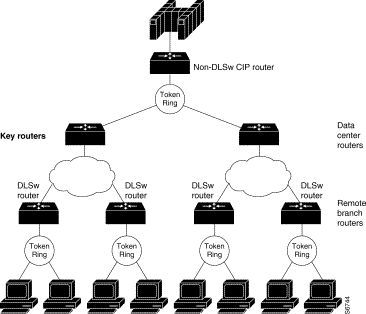
Figure 5-3 shows a network in which one DLSw-enabled concentrator router handles all the connections between the mainframe and the remote branch routers. In this case, you should designate the concentrator router as a key device.

Initially, no routers are marked as key devices when they are first added to the CiscoWorks Blue Maps database. You must take some action to mark a router as a key device. There are several ways that you can define a router as a key device.
For each router that you include in the seed file, you can use the key parameter to designate that router as a key device. If the key parameter is not used, the router is not a key device in the seed file. To see which routers are key devices, select Edit>Key Device(s) from the menu bar. In the list of routers, the key devices are highlighted.
Once you mark a router as a key device, removing the key parameter in the seed file will not change the device's status as a key device. To change the router's status as a key device, select Edit>Key Device(s) from the menu bar, deselect the router in the router list, and click Apply.
For information on using the key parameter, read the section "Using a Seed File" earlier in this chapter.
You can select the Key Device(s) menu item from the DLSw Edit menu to define routers as key devices. If you designate several routers as key devices, you can later display a key devices view of the network, as described later in the section "Displaying the Key Devices View of the Network." To define a router as a key device, highlight its name in the list as shown in the following steps:
Step 1 From the DLSw menu bar, select Edit>Key Device(s). A list of routers is displayed. If a router name is highlighted, it is a key device.
Step 2 Select those routers that you want to add to the list of key devices. Each router that you select is highlighted.
Step 3 Deselect those routers that you do not want to be key devices. The routers that you select here will not be highlighted.
Step 4 Click Apply to apply your changes in the database.
Step 5 Click Close to close the window.
In a key devices view of the network, each key router is shown connected to one icon that represents all of that router's peers. This icon is called an aggregated peer router. The connection from the key router to its aggregated peer router is called an aggregated peer connection. Each aggregated peer connection and each aggregated peer router is displayed in a color that indicates its status. But because each aggregated peer represents a group of several peers or peer connections, the status that is shown for the aggregated peer or peer connection represents the status of each component that makes up the aggregate. You can specify how to choose the color in which the aggregated status is displayed. There are two ways to choose the status of an aggregated peer or peer connection: using the worst-case status or using a calculated status.
You can choose to have all aggregated peers displayed in the color that is used for the peer with the worst status. For example, if the worst peer connection represented in the aggregated peer connection is inactive, then the aggregated peer connection is displayed as a red line and its aggregated peer router is also displayed in red.
To specify how aggregated peers are displayed, use the following procedure:
Step 1 Select Edit>Define Aggregate Status from the menu bar. The Aggregate Status Definition window is displayed.
Step 2 Select Propagate Highest Abnormal Status.
Step 3 Click Apply.
You can choose to have the aggregated peers displayed in a color that represents a status that is calculated from the statuses of the individual peers that make up the aggregation. The calculation is based on the percentage of peers in the aggregation whose condition is abnormal. An abnormal condition is based on the reported status of the peer.
A peer connection can have one of these four statuses: active, unknown, degraded, or inactive. Unknown, degraded, and inactive statuses are considered abnormal.
To determine how to display an aggregated peer, look at the percentage of individual peers in the aggregated peer that have an abnormal condition. Once that percentage is determined, you define two threshold values: the Marginal% value and the Critical% value.
You define the Marginal% value for your network. The default Marginal% value for DLSw aggregated peers is 0%.
You define the Critical% value for your network. The default Critical% value for DLSw aggregated peers is 20%.
A special case occurs when all peers are unknown. In this case, the aggregated peer is considered unknown and is displayed in blue.
DLSw calculates the status of an aggregated peer connection using the following method:
1. DLSw finds the percentage of all peer connections in the aggregation whose status is abnormal. For this example, let X% be the percentage of abnormal peer connections.
2. DLSw compares the percentage of peer connections that are abnormal (X%) to the Critical% value and to the Marginal% value.
3. DLSw now calculates the status of the aggregated peer connection:
Example
Let's assume that there is a key router with six peer connections: three connections are active; one connection is unknown; and, two connections are inactive. That means that 50% of the peer connections have abnormal status. Here are some scenarios:
To specify percentages for the Marginal% value and Critical% value, use the following procedure:
Step 1 From the menu bar, select Edit>Define Aggregate Status. The Aggregate Status Definition window is displayed, as shown in Figure 5-4.
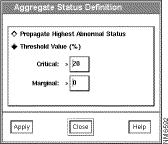
Step 2 Select Threshold Value (%) and enter the values in the Critical% and Marginal% fields.
Step 3 Click Apply.
The cwbinit file contains a set of startup options and variables with which the DLSw application starts. However, if you start DLSw with command-line options, the command-line options override the options set in the cwbinit file. These DLSw parameters in the cwbinit file are used only by the DLSw poller when it starts. If you change the cwbinit file while the poller is running, you must reset the poller to enable the changes to cwbinit.
To reset the poller, select Admin>Process Control from the DLSw menu bar or enter the following command from the command prompt:
% $CWBROOT/etc/runprocess cwbdlswpollerd -f
For each variable that you set in cwbinit, ensure that there is a space before and after the equal sign. For example, to set the eventgen variable off, you would enter the following line in cwbinit:
eventgen = off
Each DLSw user can have a private cwbinit file. If the DLSw application cannot find $HOME/.cwbinit, it reverts to the $CWBROOT/etc/cwbinit file.
The following sample of the cwbinit file shows just the values that apply to the DLSw application.
# Cisco Works Blue Maps preferences file
# (comments start with # in column 1 and blank lines are OK)
# (keywords must start in column 1, and there must be
# a blank on each side of the = character)
# These parameters are only read at startup time by the DLSw poller and
# APPN applications. See the DLSw or APPN parameters section for details.
# *************************
# *** Global parameters ***
# *************************
# to turn off event generation set eventgen = off.
# valid values : on/off. default value : on.
eventgen = on
# to turn on device state change event generation set eventgen_device = on.
# valid values : on/off. default value : off.
eventgen_device = off
# ***********************
# *** DLSw parameters ***
# ***********************
# These parameters are used by the DLSw poller. If the poller is already
# running, it must be reset from the Admin>Process Control window
# from the motif menu bar, or from the command line, as follows:
# $CWBROOT/etc/runprocess cwbdlswpollerd -f
# *** DLSw event generation parameters ***
# to turn off dlsw peer event generation set eventgen_dlswpeercxn = off.
# valid values : on/off. default value : on.
eventgen_dlswpeercxn = on
# to turn on dlsw circuit event generation set eventgen_dlswcircuit = on.
# valid values : on/off. default value : off.
eventgen_dlswcircuit = off
# *** DLSw polling parameters ***
# to turn on slow polling of non-key dlsw peer routers set pollNonKeyPeer = on.
# valid values : on/off. default value : on.
pollNonKeyPeer = on
# to set slow polling timer set nonKeyPeerSleepTime = <number of seconds>.
# valid range of values : 0 to 65535 seconds. default value : 600 seconds.
nonKeyPeerSleepTime = 600
# to turn on circuit polling of dlsw key routers set pollKeyCircuit = on.
# valid values : on/off. default value : on.
pollKeyCircuit = on
# to set circuit polling timer set keyCircuitPollSleepTime = <number of seconds>
# valid range of values : 0 to 65535 seconds. default value : 1200 seconds.
keyCircuitPollSleepTime = 1200
# to set number of threads for polling key router peer connections set
# numKeyPeerPollThreads = <number>.
# valid range of values : 1 to 10. default value : 5.
numKeyPeerPollThreads = 5
# to set number of threads for polling non-key router peer connections set
# numNonKeyPeerPollThreads = <number>.
# valid range of values : 1 to 10. default value : 1.
numNonKeyPeerPollThreads = 1
# to set number of threads for polling key router circuits
# set numKeyCircuitPollThreads = <number>.
# valid range of values : 1 to 10. default value : 1.
numKeyCircuitPollThreads = 1
# to set sleep time for directed poll set
# directedPollSleepTime = <number of seconds>.
# valid range of values : 0 to 65535 seconds. default value : 0.
directedPollSleepTime = 0
# to set action to take when peers are down set
# peerDownAction = <executable Name>
# valid values : /path/executableName
# passed parameters : Local-Ip-Address Remote-Ip-Address
#peerDownAction =
# to set action to take when circuits are down set
# circuitDownAction = <executable Name>
# valid values : /path/executableName
# passed parameters : MacAddress1 SAP1 MacAddress2 SAP2
#circuitDownAction =
# to poll additional devices for dlsw
# peer connections at the rate of key-peer-poll and
# circuits at the rate of circuit-poll
# additionalPollRouterList = <router_name separated by ','>
# valid values : router1.name.com, router2.name.com
#additionalPollRouterList =
.
.
[APPN Section Deleted]
You can configure the DLSw application to generate event notifications (trap messages) when specific network events occur. These events can include device state changes, peer connection state changes, and changes to the status of a circuit. When a specified network event occurs, DLSw sends an event notification to the UNIX network management system.
Use the following event values in the cwbinit file to specify whether to send event notifications and to configure which events will cause trap messages to be sent.
After you configure the event notification options, DLSw will send trap messages to the network management system at your UNIX workstation. The "Event Notification Messages" chapter describes the trap messages sent by the Maps applications.
You can configure how the DLSw application polls routers for peer connection information and for circuit information. You can select from the following polling methods:
If you make no changes, the DLSw polling daemon uses all three polling methods: it polls key routers and non-key routers for peer connection information, and it polls key routers for circuit information. You can change these selections using the following polling values in the cwbinit file.
additionalPollRouterList = routera.domain.com,routerb.domain.com
The peerDownAction and circuitDownAction exits let you create your own exit routines to handle situations when key routers do not respond to polling for peer connection information and for circuit information.
user_application local_IP_address remote_IP_address
user_application MACAddress1 SAP1 MACAddress2 SAP2
When your exit routine is invoked by one of these exits, it can do a number of things:
This section describes how to locate and select devices on the DLSw map.
There are two methods for locating a device on the map:
To locate a device from the View menu you must know the device's IP address or host name. Then use the following procedure:
Step 1 From the DLSw menu bar, select View>Locate.
Step 2 Select either By Name or By IP Address.
Step 3 Enter the IP address or host name of a router.
Step 4 Click Locate.
DLSw displays the part of the map that contains the selected device and highlights the device.
To use the Locator window to locate a device on the DLSw map, use this procedure:
Step 1 If the Locator window is not displayed, select Option>Show Locator from the menu bar on the DLSw main window.
The Locator window is displayed. The Locator window displays a miniature representation of the entire network. A black frame delimits the subset of the network that is actually displayed in the DLSw main window.
Step 2 Move the frame in one of the following ways:
Step 3 As you move the frame in the Locator window, look for the device you want in the main window. When you find the device you want, you can display the focus view for that router. Then you can display peer statistics or circuits for that router, or use one of the other Maps functions.
There are several ways to select one or more devices from a map:
You can rediscover the selected devices to update their status by selecting Edit>Rediscover Device(s) from the menu bar, or by selecting Rediscover from a router's popup menu.
You can delete the selected devices as a group by selecting Edit>Delete Device(s) from the menu bar.
If the set of devices on any map is not up-to-date because automatic update is disabled or set to an infrequent interval, and you have not chosen to list target devices in a seed file, you can add and delete devices manually. From the Edit menu, you can select either Add Device or Delete Device.
When you add or delete a device, the DLSw application prompts you for the device's host name or IP address and read community string. If the device is found to belong on this map, the application immediately adds a new device to the map or removes an existing device, depending on the menu item you selected.
If a Cisco device does not appear on the map, but you know that it exists in the network, you can add the device in one of the following ways:
After you add or delete a device from the map, you can save the current map to a seed file with the $CWBROOT/etc/CreateSeedFile command:
$CWBROOT/etc/CreateSeedFile -s destination_file
Where destination_file is the name of the seed file.
Each icon on the DLSw map has an associated popup menu. To activate the menu, click the icon with the right mouse button. Table 5-1 lists the popup menus associated with the icon.
| Icon | Popup Menu Items |
|---|---|
Router | Information---Displays information about the selected known router, including the DLSw version, the version of Cisco IOS that the router is running, DLSw performance information, and circuit information. Peer Statistics---Displays a list of the selected router's peer routers. When you select a peer router, you will see detailed statistics about that peer router. Note: The Peer Statistics option is available in the focus view and global view only. Circuit List---Displays the Circuit List window for a known router. After you select the filter criteria, it displays a list of circuits that meet the filter criteria. You can double-click the displayed circuits to view more detailed information about the circuit and its component devices and links. Rediscover---Rediscovers the router information and updates the router information in the Maps database. Telnet---Starts a Telnet client that logs you in to the selected device. |
Aggregated Peer Router | Focus View---Displays a focus view map for the key router. Aggregate Summary---Displays information about the aggregated peer connection. |
Aggregated Peer Connection | Focus View---Displays a focus view map for the key router. Aggregate Summary---Displays information about the aggregated peer connection. |
The DLSw map presents several views of your DLSw network devices:
When you select View>Key Devices, the Locator window displays all the key routers (those routers designated as key devices) while the main window displays as much of the key devices view as will fit in a magnified format, which may be the entire network or a subset of the network. The key devices view is displayed when you start the DLSw application. To display the key devices view at any other time, select View>Key Devices from the DLSw menu bar. The key devices view is displayed, as shown in Figure 5-5. If you want to adjust the view, move the black frame in the Locator window to change the view in the main window.
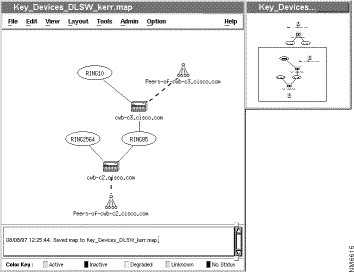 k
k
The key devices view displays the key routers in the network. For any one key router, all its peer routers are displayed as a single icon that represents the aggregation of those peer routers. From any one key router, all the peer connections to its peer routers are displayed as a single peer connection. The color of the aggregated peer router and aggregated peer connection both reflect the status of the links that make up the aggregated peer connection.
From the key devices view, you can select an aggregated peer router icon or aggregated peer router icon with the right mouse button. Select Focus View from the menu to display a focus view for the key router.
You can also select an aggregated peer router icon or an aggregated peer connection icon and select Aggregate Summary from its popup menu to see information about the individual peer connections that make up the aggregation.
When you select Global from the View menu, the Locator window displays all the routers in the network while the main window displays as much of the network as will fit in a magnified format, which may be the entire network or a subset of the network. To display the global view, select View>Global from the DLSw menu bar. The global view is displayed, as shown in Figure 5-6. If you want to adjust the view, move the black frame in the Locator window to change the view in the main window.

When you select Focus from the View menu, the Locator window displays a subset of the network from the viewpoint of a single router, called the focus router, which is shown with a black border. The main window displays as much of the focus view as will fit in a magnified format, which may be the entire network or a subset of the network. The focus view displays the same map icons and status as the global view. The following sections describe the ways you can display the focus view for a router.
To display the focus view for a specific router from the View menu, use the following procedure:
Step 1 Locate the router in the main window.
Step 2 Click the router with the right mouse button.
Step 3 From the popup menu, select Focus View.
To display the focus view for a router from the View menu, use the following procedure:
Step 1 From the DLSw menu bar, select View>Focus.
Step 2 Type in the device name of the router.
Step 3 Click OK.
To display the focus view for a router from the View menu, use the following procedure:
Step 1 Locate the router in the main window.
Step 2 Click the router with the left mouse button.
Step 3 Select View>Focus.
Step 4 Click OK in the Focus Peer Prompt window.
Once you locate a router on the map, you can display information about that router by doing the following steps:
Step 1 Locate the router in the main window.
Step 2 Click the router with the right mouse button.
Step 3 Select Information from the router's popup menu.
The DLSw application displays the Peer Information window, as shown in Figure 5-7, that contains information about that router, including the DLSw and Cisco IOS versions, connections, and circuits.
In the Peer Information window, you can click Refresh to update the view.
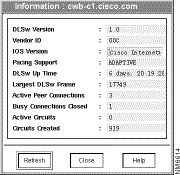
Table 5-2 describes the fields in the Peer Information window.
| Field | Description |
|---|---|
DLSw Version | The version of DLSw used between local and remote peers. |
Vendor ID | The name of the DLSw vendor and its ID. |
IOS Version | The Cisco IOS version running on the router. |
Pacing Support | The receiving window size. The possible values are NONE, ADAPTIVE, and FIXED. |
Up Time | The elapsed time since the DLSw router entered the active state. |
Largest DLSw Frame | The largest frame size (including DLC header and information field but not any MAC-level or framing octets) that this DLSw router can forward on any path through itself. |
Active Peer Connections | The number of transport connections that are not in the disconnected state. |
Busy Connections Closed | The number of times transport connections in this node exited the connected state with some non-zero number of active circuits on the transport connection. |
Active Circuits | The current number of circuits that are not in the disconnected state. |
Circuits Created | The total number of circuits added or reactivated upon exiting the disconnected state table. |
Step 1 Locate the router in the main window in the focus view or global view.
Step 2 Click the router with the right mouse button.
Step 3 Select Peer Statistics from the router's popup menu. If the router has more than one peer connection, select a peer from the Select Peer window.
Step 4 If the Select Peer window is displayed, select the peer connection you want to see and click Get and go to Step 5. If there is only one peer connection, go to Step 5.
Step 5 The DLSw application displays a Peer Statistics window, shown in Figure 5-8, that contains routing statistics for the peer connection.
In the Information window, you can click Refresh to update the view.
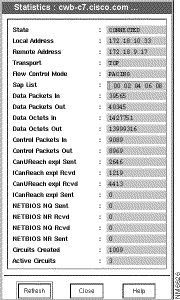
Table 5-3 describes the fields in the Peer Statistics window.
| Field | Description |
|---|---|
State | State of the transport connection. |
Local Address | The local transport address for this transport connection. |
Remote Address | The remote transport address of the transport connection. |
Transport | The transport domain of the transport connection. |
Flow Control Mode | The flow control mechanism in use on the transport connection. Values are UNDETERMINED, PACING, and OTHER. |
Sap List | The supported SAP list received in the capabilities exchange message from the peer DLSw router. |
Data Packets In | Number of Switch-to-Switch Protocol (SSP) messages of type DGRMFRAME, DATAFRAME, or INFOFRAME received on this transport connection. |
Data Packets Out | Number of SSP messages of type DGRMFRAME, DATAFRAME, or INFOFRAME transmitted on this connection. |
Data Octets In | Number of octets in SSP messages of type DGRMFRAME, DATAFRAME, or INFOFRAME received on this transport connection. |
Data Octets Out | Number of octets in SSP messages of type DGRMFRAME, DATAFRAME, or INFOFRAME transmitted on this connection. |
Control Packets In | Number of SSP messages received on this transport connection which were not of type DGRMFRAME, DATAFRAME, or INFOFRAME. |
Control Packets Out | Number of SSP messages transmitted on this transport connection which were not of type DGRMFRAME, DATAFRAME, or INFOFRAME. |
CanUReach expl Sent | Number of CanUReach_ex messages sent on the transport connection. |
ICanReach expl Rcvd | Number of ICanReach_ex messages received on the transport connection. |
CanUReach expl Rcvd | Number of CanUReach_ex messages received on the transport connection. |
ICanReach expl Sent | Number of ICanReach_ex messages sent on the transport connection. |
NETBIOS NQ Sent | Number of NetBIOS_NQ_ex messages sent on the transport connection. |
NETBIOS NR Rcvd | Number of NetBIOS_NQ_ex messages received in the transport connection. |
NETBIOS NR Sent | Number of NETBIOS_NR_ex messages sent on this transport connection. |
NETBIOS NQ Rcvd | Number of NetBIOS_NQ_ex messages received in the transport connection. |
Circuits Created | Number of times that circuits entered a circuit-established state (not counting transitions from circuit-restart). |
Active Circuits | Number of currently active circuits on this transport connection. |
Step 1 Locate the router in the main window.
Step 2 Click the router with the right mouse button.
Step 3 Select Circuit List from the router's popup menu.
The Circuit List window, as shown in Figure 5-9, shows a list of the circuits that pass through the selected router. For each circuit, the Circuit List window displays the name, MAC, and service access point (SAP) for the host network connection and for the PU on the circuit (the host and the remote PU).
In the Information window, click Refresh to get a more up-to-date view.
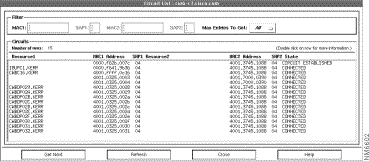 Circuit List Window
Circuit List Window
Table 5-4 describes the fields in the Circuit List window.
| Field | Description |
Resource 1 | The PU name of the resource associated with the router in the title bar of the window. |
MAC1 Address | The MAC address of Resource 1. |
SAP1 Address | The SAP address of Resource 1. |
Resource 2 | The PU name in the circuit that is associated with the peer router. |
MAC2 Address | The MAC address of Resource 2. |
SAP2 Address | The SAP address of Resource 2. |
State | The state of the circuit connection, which can be DISCONNECTED, CIRCUIT START, RESOLVE PENDING, CIRCUIT PENDING, CIRCUIT ESTABLISHED, CONNECT PENDING, CONTACT PENDING, CONNECTED, DISCONNECT PENDING, HALT PENDING, HALT PENDING NOACK, CIRCUIT RESTART, or RESTART PENDING. |
Step 4 Double-click a circuit (one row of information) in the Circuit List window to display a Circuit Information window (see Figure 5-10), which shows a diagram of the entire circuit and lists information about the peer routers in the circuit.
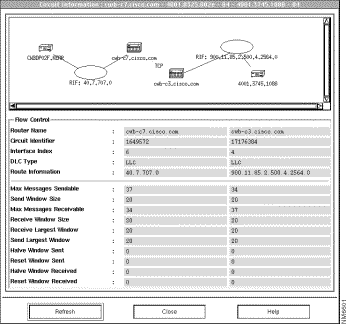
Table 5-5 describes the fields in the Circuit Information window.
| Field | Description |
Router Name | Device name of the DLSw router. |
Circuit Identifier | The circuit identifier assigned by this DLSw node to this circuit. The first four octets are the Data Link Control (DLC) port ID, and the second four octets are the data link correlator. |
Interface Index | The IfEntry index of the local interface through which the PU can be reached. |
DLC Type | The DLC protocol in use between the DLSw node and the PU. The possible values are QLLC, SDLC, LLC, NA, or Other. |
Route Information | If source-route bridging is in use between the DLSw node and the PU, this is the routing information field describing the path between the two devices. Otherwise the value will be an octet string of zero length. |
Max Messages Sendable | The number of paced Switch-to-Switch Protocol (SSP) messages that this DLSw router is authorized to send on this circuit before it must stop and wait for an additional flow control indication from the partner DLSw router. |
Send Window Size | The current window size that this DLSw is using in its role as a data sender. This is the value by which the router can increase the number of messages it is authorized to send if it receives a flow control indication with the bits specifying "repeat window." |
Max Messages Receivable | The current number of paced SSP messages that this DLSw router has authorized the partner DLSw router to send on this circuit before the partner DLSw must stop and wait for an additional flow control indication from this DLSw router. |
Receive Window Size | The current window size that this DLSw router uses in its role as a data receiver. This is the number of additional paced SSP messages that this DLSw router can authorize its DLSw partner router to send if this DLSw router sends a flow control indication with the bits specifying "repeat window." |
Receive Largest Window | The largest receive window size granted by this DLSw router during the current activation of this circuit. This is not the largest number of messages granted at any time, but the largest window size as represented by FCIND operator bits. |
Send Largest Window | The largest send window size (with respect to this DLSw router) granted by the partner DLSw router during the current activation of this circuit. |
Halve Window Sent | The number of Halve window operations this DLSw has sent on this circuit, in its role as a data receiver. |
Reset Window Sent | The number of Reset window operations this DLSw router has sent on this circuit, in its role as a data receiver. |
Halve Window Received | The number of Halve window operations this DLSw router has received on this circuit, in its role as a data sender. |
Reset Window Received | The number of Reset window operations this DLSw router has received on this circuit, in its role as a data sender. |
While in the key devices view, you can display a focus view of a key router from its aggregated peer router or its aggregated peer connection by using the following procedure.
Step 1 Locate an aggregated peer router in the main window.
Step 2 Click the router with the right mouse button.
Step 3 Select Open View from the router's popup menu. The application displays the focus view for the key router that is the peer to the routers that are represented by the selected aggregated peer router.
While in the key devices view, you can display summary information about the peer connections that are represented by an aggregated peer router icon or aggregated peer connection icon.
Step 1 Locate an aggregated peer router or aggregated peer connection in the main window.
Step 2 Click the icon with the right mouse button.
Step 3 Select Aggregate Summary from the icon's popup menu. The application displays the summary of aggregated peers, as shown in Figure 5-11. The Aggregate Summary window displays information about the peers in the aggregation. This aggregation does not include connections to other key devices.
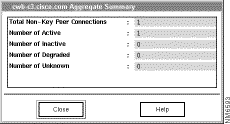 ggregate Summary Window
ggregate Summary Window
Table 5-6 describes the fields in the Aggregate Summary window.
| Field | Description |
Total Non-Key Peer Connections | The total number of peers that are aggregated into this icon. This count does not include connections to key devices. |
Number of Active | The number of active peers that are aggregated into this icon. |
Number of Inactive | The number of inactive peers that are represented by this icon. |
Number of Degraded | The number of degraded peers that are represented by this icon. |
Number of Unknown | The number of unknown peers that are represented by this icon. |
You can change the view by selecting one of the following items from the View menu:
When the CiscoWorks Blue SNA View application is installed on the workstation with Maps, you can retrieve the dependency view information for a PU or LU. SNA View gets the PU and LU information from the VTAM at the mainframe; Maps displays the PU and LU information in logical maps. You can display information about specified PUs and LUs, and you can see their dependency paths through the network to the VTAM host. There are several ways to retrieve PU and LU information, depending on whether you know the PU or LU name, and on what you want to do with the PU or LU once you locate it.
If you know the name of the PU or LU, you can use the View menu on the Maps menu bar to locate a PU or LU and display a dependency view. To view a PU or an LU from the View menu, use the following procedure:
Step 1 From the DLSw application's menu bar, select View. The View menu is displayed.
Step 2 From the View menu, select PU to view a PU, or select LU to view an LU. The PU/LU Prompt window is displayed, as shown in Figure 5-12.

Step 3 From the PU/LU Prompt window, enter the PU name or LU name in the format NAME.DOMAIN.
Step 4 Click OK. Maps displays a dependency view for the selected PU or LU.
If you would rather select the PU names from a filtered list, you can use the PU item on the Tools menu, which lets you set up filtering criteria to search for a PU name based on VTAM information or on its router or Token Ring dependency. From the Map application's menu bar, select Tools>PU to display the PU Filter window, as shown in Figure 5-13.
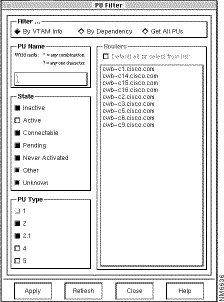
When you select PU from the Maps Tools menu, the application displays the PU Filter window (shown in Figure 5-13) to let you configure a filter to be used in selecting which PUs to display in a PU List window.
The PU List window is displayed, showing all the PUs filtered as you requested. The PU List window is described in the upcoming section "Using the PU List Window."
You can filter the PU List based on the PU name, PU state, and PU type.
Step 1 From the PU Filter window, select By VTAM Info.
Step 2 In the PU Name field, enter all of a PU name, or just part of a PU name and wildcards. The PU List will contain PUs whose PU names match the filter criteria.
Step 3 In the PU State field, select one or more PU states. The PU List window will contain the names of PUs that match one of the PU states that you select.
Step 4 In the PU Type field, select one or more PU types. The PU List window will contain PUs whose type matches one of the PU types that you select.
Step 5 Click Apply.
From the PU Filter window, select By Dependency to filter the PU List based on its router dependency. Select one or more routers from the Routers field in the PU Filter window and click Apply. The PU List window will contain the PUs dependent on the selected routers.
Select Get All PUs and then click Apply to display a PU List that contains all PUs discovered by SNA View.
This section describes how to use the functions of the PU List window, shown in
Figure 5-14. The PU List window shows all the PU names that satisfy the same set of PU filter criteria.
The PU List window is static; select View>Refresh to update the status.
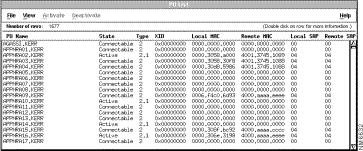
From the PU List window, you can do the following tasks:
You can activate a PU from the PU List window. This action is comparable to using the VTAM command VARY NET,ACT,ID=PU_name.
To activate a PU from the PU List window, use the following procedure:
Step 1 Select an inactive PU from the PU List window.
Step 2 From the PU List window menu bar, select Activate.
Step 3 From the Activate menu, select one of the following:
Default activates the PU as if you had issued the VTAM command VARY NET,ACT,SCOPE=COMP,ID=PU_name.
All activates the PU and its LUs regardless of the ISTATUS value, which is the status with which the PU was configured through VTAM.
Only activates the selected PU but no LUs regardless of their ISTATUS values, which is the status with which the PU was configured through VTAM.
You can deactivate an active PU from the PU List window. This is comparable to issuing the VTAM command VARY NET,INACT,ID=PU_name. To deactivate a PU from the PU List window, use the following procedure:
Step 1 Select an active PU from the PU List window.
Step 2 From the PU List window menu bar, select Deactivate.
Step 3 From the Deactivate menu, select one of the following:
Quiesce deactivates the PU and any subordinate resources when all current sessions are terminated.
Immediate deactivates the PU and any subordinate resources immediately, disrupting active sessions.
Forced deactivates the PU forcibly; this form of deactivation is recommended for PUs that do not respond to other deactivation methods.
From the PU List window you can display a list of LUs attached to a PU. To display an LU list, use the following procedure:
Step 1 Select a PU from the PU List window.
Step 2 From the PU List menu bar, select View>Show LU List. The LU List window is displayed.
For information about using the LU List window, read the upcoming section "Using the LU List Window."
From the PU List window you can display a dependency view of the path from the PU back toward the VTAM host. To display a dependency view, use the following procedure:
Step 1 Select a PU from the PU List window.
Step 2 From the PU List menu bar, select View>Dependency.
Maps displays the PU dependency view, as shown in Figure 5-15.
Step 3 Because the PU dependency view is static, select View>Refresh to update the status.

The PU dependency view shows the network components from the PU itself, back toward the mainframe to the host network connection. The PU dependency view shown in Figure 5-15 includes the following network components, starting at the top:
From the PU List window, you can configure a new PU filter to display a new set of PU names in the PU List window. To configure a new PU List filter, use the following procedure:
Step 1 From the PU List menu bar, select View>Filter.
Step 2 Choose your filtering options: By VTAM Info, By Dependency, and Get All PUs. (These options were explained previously in the section "Filtering the PU List.")
Step 3 Click Apply.
Step 4 Click Close.
You can use the LU item on the Tools menu to set up filtering criteria to search for an LU name based on VTAM information or on its router or Token Ring dependency. From the Map application's menu bar, select Tools>LU to display the LU Filter window, as shown in Figure 5-16.
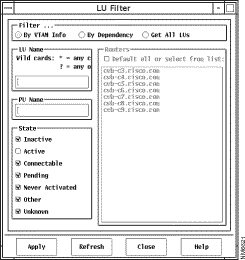
The LU Filter window (shown in Figure 5-16) lets you configure a filter that will be used to select the LUs to display in an LU List window. You can select By VTAM Info to configure the filter to select LUs based on VTAM criteria, you can select By Dependency to configure the filter based on the routers on which the LUs are dependent, or you can select Get All LUs to get all the LUs that SNA View has discovered. The LU List window is described in the upcoming section "Using the LU List Window."
You can filter the LU List based on the LU name, PU name, and LU state.
Step 1 From the LU Filter window, select By VTAM Information.
Step 2 In the LU Name field, enter all of an LU name, or just part of an LU name and wildcards. The LU List will contain LUs whose LU names match the filter criteria.
Step 3 In the LU State field, select one or more LU states. The LU List window will contain the names of LUs that match one of the LU states that you select.
Step 4 In the LU Type field, select one or more LU types. The LU List window will contain LUs whose type matches one of the LU types that you select.
Step 5 Click Apply.
You can filter the LU List based on the router dependency. Select one or more routers from the Routers field in the LU Filter window. The LU List window will contain the LUs dependent on the selected routers.
From the LU Filter window, you can select Get All LUs to display an LU List that contains all LUs discovered by SNA View.
This section describes how to use the functions of the LU List window, shown in
Figure 5-17. The LU List window shows all the LU names that satisfy the same LU filter criteria. The LU List window is static; select View>Refresh to update the status.
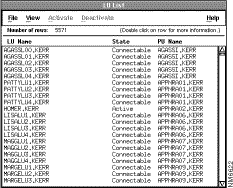
From the LU List window, you can perform the following actions:
You can activate an LU from the LU List window. This is comparable to issuing the VTAM command VARY NET,ACT,ID=LU_name.
To activate an LU from the LU List window, use the following procedure:
Step 1 Select an inactive LU from the LU List window.
Step 2 From the LU List menu bar, select Activate.
Step 3 From the Activate menu, select one of the following:
Default activates an LU as if issuing the VTAM command VARY NET,ACT,SCOPE=COMP,ID=LU_name.
All activates an LU regardless of its ISTATUS value.
You can deactivate an active LU from the LU List window. This is comparable to issuing the VTAM command VARY NET,INACT,ID=LU_name. To deactivate an LU from the LU List window, perform the following steps:
Step 1 Select an active LU from the LU List window.
Step 2 From the LU List menu bar, select Deactivate.
Step 3 From the Deactivate menu, select one of the following:
Quiesce deactivates the LU when all current sessions are terminated.
Immediate deactivates the LU immediately, disrupting active sessions.
Forced deactivates the LU forcibly; this action is recommended for LUs that do not respond to other deactivation methods.
From the LU List window you can display a dependency view of the path from the LU back toward the VTAM host. To display an LU dependency view, use the following procedure:
Step 1 Select an LU from the LU List window.
Step 2 From the LU List menu bar, select View>Dependency.
Maps displays the LU dependency view, as shown in Figure 5-18.
Step 3 Because the LU dependency view is static, select View>Refresh to update the status.

The LU dependency view shows the network components from the LU itself, back toward the mainframe to the host network connection. The LU dependency view shown in Figure 5-18 includes the following network components, starting at the top:
From the LU List window, you can configure a new LU filter to display a new set of LU names in the LU List window. To configure a new LU List filter, use the following procedure:
Step 1 From the LU List menu bar, select View>Filter.
The LU Filter window is displayed.
Step 2 Choose your filtering options: By VTAM Info, By Dependency, or Get All LUs. (These options were explained previously in the section "Filtering the LU List.")
Step 3 Click Apply.
Step 4 Click Close.
The following sections describe how to enable and disable SNA activation.
To enable SNA activation and deactivation, use the following procedure to create the $CWBROOT/etc/SnaActDeactOn file.
Step 1 If you are already running DLSw, exit the application by selecting File>Exit Program from the menu bar.
Step 2 Become the root user by entering the following command:
su root
Step 3 When prompted, enter the root user's password.
Step 4 Change to the $CWBROOT/etc directory by entering the following command.
cd install_directory/etc
where install_directory is usually /usr/cw-blue for AIX or /opt/CSCOcb for HP-UX and Solaris.
Step 5 Create an SNA activation/deactivation file by entering the following command:
touch SnaActDeactOn
Step 6 Change back to your username by entering the following command:
exit
Step 7 Restart the DLSw Maps application, as described in the section "Starting DLSw."
To disable SNA activation and deactivation, use the following procedure to remove the $CWBROOT/etc/SnaActDeactOn file.
Step 1 If you are already running DLSw, exit the application by selecting File>Exit Program from the menu bar.
Step 2 Become the root user by entering the following command:
su root
Step 3 When prompted, enter the root user's password.
Step 4 Change from the current directory to the $CWBROOT/etc directory.
cd install_directory/etc
Where install_directory is usually /usr/cw-blue for AIX or /opt/CSCOcb for HP----UX and Solaris.
Step 5 Remove the SNA activation/deactivation file by entering the following command:
rm SnaActDeactOn
Step 6 Switch back to your username by entering the following command:
exit
Step 7 Restart the DLSw Maps application, as described in the section "Starting DLSw."
To save a custom topology, select File>Save As and enter a name for the topology. When you re-open this topology file, you will see an exact representation of the saved map. Saving is also done automatically when you switch views or end the application normally.
If the CiscoWorks Blue SNA View product is also installed, you can use the SNA View Task Manager window, which is described in the CiscoWorks Blue SNA View Workstation Installation and User Guide. To start the SNA View Task Manager, select Tools>SNA View Task Mgr menu bar.
SNA View lets you see beyond the DLSw routers to the PUs and LUs in the network. The Task Manager lets you receive VTAM and MVS messages, and issue mainframe commands, from your UNIX workstation.
The colors and symbols on a DLSw map have the following meanings:
Table 5-7 shows the icons that can appear on a DLSw map.
| Icon | Description |
|---|---|

| Token Ring |

| Routing information field (RIF)
|

| Known DLSw router
|

|
Focus router
|

| Router not known to CiscoWorks Blue Maps (not discovered)
|

|
Aggregated peer routers
|

| PU in a dependency view |

| LU in a dependency view |

| Physical connection |

| Logical connection or aggregated link |
![]()
![]()
![]()
![]()
![]()
![]()
![]()
![]()
Posted: Thu Aug 19 11:01:31 PDT 1999
Copyright 1989-1999©Cisco Systems Inc.